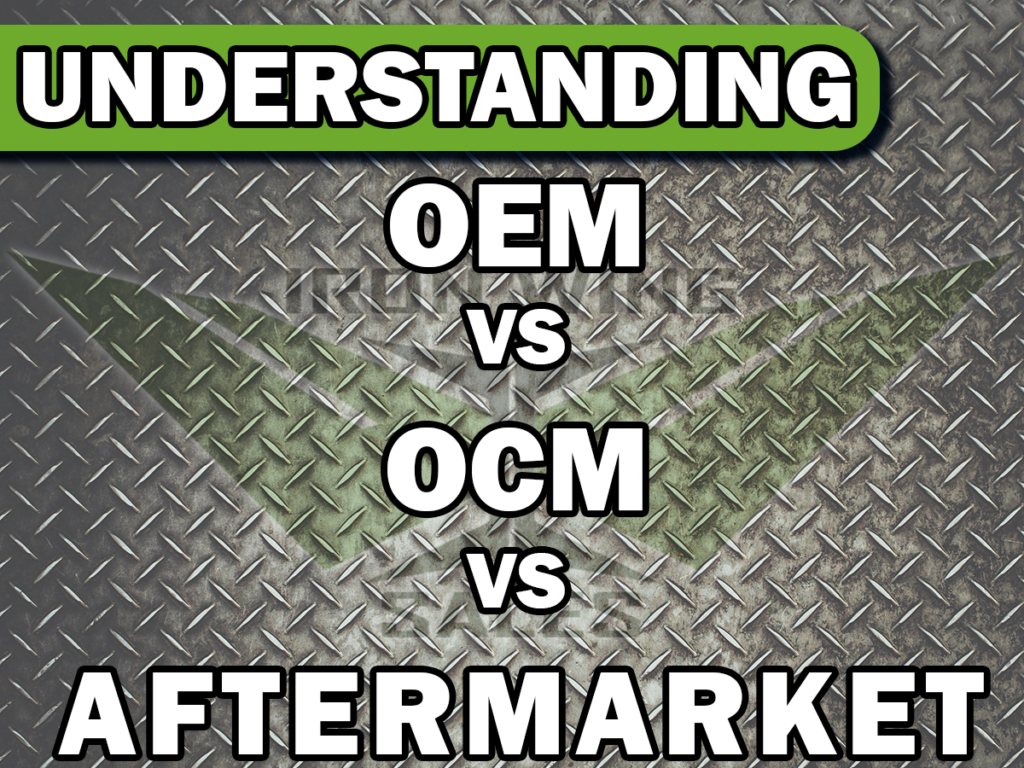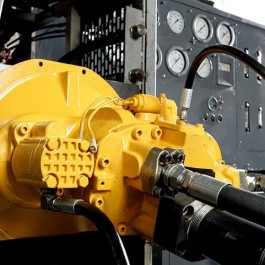The Benefits and Disadvantages of Choosing OEM Building Components Over New Parts for Your Equipment
When it comes to preserving and fixing equipment, the choice in between deciding for original tools producer (OEM) building components versus brand-new parts is a vital factor to consider for several businesses. While OEM components are developed to fulfill the details requirements of the tools and are often connected with a greater level of top quality and compatibility, there are also downsides to be considered, such as prospective cost implications and schedule problems.
Quality and Compatibility Conveniences
When taking into consideration the top quality and compatibility advantages of OEM building and construction parts versus repairs, it is vital to assess their precision engineering and seamless integration capabilities (OEM Equipment Parts). OEM construction parts, being initial devices produced by the exact same firm that produced the devices itself, are made to precise requirements. This accuracy engineering makes sure that OEM parts are customized to fit seamlessly within the existing tools, decreasing the danger of breakdowns or compatibility problems. The compatibility benefits of OEM parts extend past just fitment, as they are also engineered to work harmoniously with other parts, enhancing the general performance and long life of the equipment.
In comparison, brand-new components might not supply the very same level of accuracy engineering and compatibility as OEM parts. While brand-new components might be a lot more economical and readily available in some cases, they typically do not have the careful design and quality assurance that come with OEM building components.

Greater Expense Considerations
Offered the premium high quality and compatibility advantages of OEM building and construction components over repairs, it is important to currently address the element of greater expense factors to consider in the decision-making procedure. While OEM components are recognized for their exact fit and high performance, they commonly come at a higher rate point compared to aftermarket options. The first investment in OEM components may seem much more pricey, yet in the long run, they can show to be extra cost-effective because of their toughness and integrity.
When examining the higher expense of OEM building and construction components is the possible savings in terms of decreased upkeep and repair work expenditures,One crucial factor to consider. OEM components are engineered to fulfill the certain demands of the equipment, which can result in fewer breakdowns and less downtime. This can translate into significant price financial savings for equipment owners in regards to reduced repair service and replacement prices over the life expectancy of the equipment.
Additionally, spending in OEM components can also contribute to keeping the resale value of the equipment. Inevitably, while the greater expense of OEM building components may call for a bigger ahead of time financial investment, the long-term advantages in terms of efficiency, price, and integrity cost savings make them a helpful and viable choice for equipment owners looking to optimize the worth of their investments.
Dependability and Service Warranty Insurance Coverage
In analyzing the selection between OEM building and construction components and new parts, a vital aspect to think about is the level of integrity and guarantee coverage offered (OEM Equipment Parts). OEM building and construction parts, being made by the original tools maker, are designed to fulfill the specific requirements of the devices, making certain a high level of integrity.
On the other hand, brand-new parts may not always supply the exact same degree of dependability as OEM components, as they might not have been specifically developed for the devices concerned. This can possibly result in compatibility problems or a higher danger of failure. Furthermore, the guarantee protection for brand-new parts might differ relying on the producer or vendor, potentially leaving tools owners with much less defense against malfunctions or issues. When thinking about dependability and service warranty insurance coverage, choosing for OEM building parts may offer a much more secure and trustworthy solution for devices upkeep and longevity.
Efficiency and Longevity Enhancements
Having developed the value of reliability and warranty insurance coverage in the selection between OEM building components and brand-new components, the emphasis currently changes in the direction of evaluating how these components add to efficiency and longevity enhancements. OEM construction parts are engineered to precise specs, guaranteeing seamless combination and ideal performance within the equipment. This precision results in improved total performance and performance, as the components are created to function sympathetically with the equipment they are meant for.
In addition, OEM components usually go through extensive testing to meet sector criteria and maker demands, assuring a greater level of quality compared to common options. This remarkable top quality converts right into enhanced sturdiness and longevity for the equipment, reducing the risk of unanticipated malfunctions and expensive repairs. By making use of OEM building and construction parts, tools owners can experience improved efficiency, extended life-span, and reduced downtime, ultimately bring about boosted functional efficiency and cost-effectiveness in the future.
Potential Minimal Accessibility Issues

When counting on OEM building parts for devices repair and maintenance, one substantial downside that can develop is the prospective restricted availability of these parts. As a result of elements such as production timetables, supply chain disturbances, or the discontinuation of certain elements by makers, there may be instances where OEM parts come to be scarce or even obsolete. This deficiency can bring about hold-ups in equipment servicing, long term downtime, and enhanced costs connected with sourcing different options.
Limited schedule of OEM building and construction parts can also interfere with the effectiveness of maintenance groups, as they may require to invest extra effort and time looking other for appropriate substitutes or waiting for back-ordered components to arrive. In instances where certain OEM parts are crucial for optimal equipment efficiency or safety conformity, the unavailability of these parts can position severe operational threats. To reduce these obstacles, devices supervisors ought to preserve clear interaction with vendors, explore choices for equipping vital components in advance, and take into consideration alternative remedies or aftermarket parts when OEM choices are limited.
Conclusion
In conclusion, when considering whether to pick OEM building components over repairs for equipment, it is necessary to consider the benefits of high quality, compatibility, dependability, efficiency, and longevity versus the drawbacks of greater price and possible restricted schedule. Ultimately, the decision must be based upon the specific requirements and priorities of the equipment owner, in addition to the relevance of warranty protection in making certain lasting contentment and operational efficiency.
When it comes to preserving and repairing tools, the choice in between choosing for original tools supplier (OEM) building components versus brand-new components is a crucial factor to consider for numerous organizations.Offered the superior quality and compatibility benefits of OEM building and construction components over new parts, it is vital to currently deal with the element of greater expense considerations in the decision-making procedure. OEM Equipment Parts.On the various other hand, brand-new components may not always offer the same degree of integrity as OEM components, as original site they may not have been specifically designed for the equipment in inquiry.When counting on OEM building parts for equipment maintenance and repair work, one significant downside that can emerge is the possible restricted accessibility of these parts. To minimize these obstacles, devices managers should keep clear interaction with vendors, explore options for stocking important parts in advance, and take into consideration alternate services or aftermarket components when OEM alternatives are limited